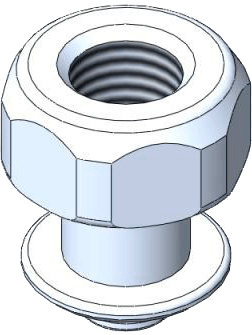Dual-Flow Valves
Brand: EDCO USADual-flow valves limit vacuum leakage in a system where some of the vacuum cups may not be in sealing contact with the workpiece.
Since vacuum flow is limited by a small orifice, dual-flow valves are only recommended for non-porous or slightly porous, light-weight part.
There are two main ways to apply dual-flow valves.
The first way to use a dual-flow valve is by bringing a vacuum cup equipped with a dual-flow valve into contact with the workpiece. Once contact is made, turn on the vacuum source.
Non-sealing vacuum cups will leak and cause the associated dual-flow valves to close to orifice flow only.
The second way to use a dual-flow valve is to turn the vacuum source on to close all dual-flow valves before the vacuum cups contact the workpiece.
The dual-flow valves will remain in orifice flow to establish vacuum once contact between the vacuum cups and workpiece is made.
In either case, part release is accomplished by removing the vacuum source and admitting atmospheric air to reopen the dual-flow valves.
For a faster cycle time, a blow-off pulse of compressed air may be used to break the vacuum and release the part.







